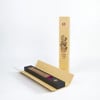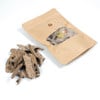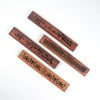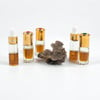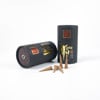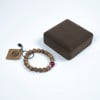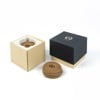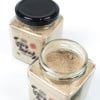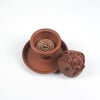American newspaper explains why Vietnam's Agarwood is expensive
For thousands of years, Agarwood has been known as "Thien Moc" - Wood of Heaven. Premium frankincense costs up to 100,000 USD/kg (equivalent to more than 2.3 billion VND). This price makes Agarwood become one of the most expensive ingredients in the world.
In order for the tree to produce Agarwood, it must first be injured (fungal infection). So how does this process work? What is frankincense used for? What makes it so valuable?
Aquilaria Crassna is a species of tree native to the rainforests of Southeast Asia. Before the tree is injured, the healthy sap inside the tree is pale, odorless, and worthless. However, in nature there are many external factors that affect the plant. For example, when herbivores pass by butt into the trunk, causing damage that leads to the growth of a fungus inside the tree, called Phialophora parasitica. Next, the ants punch holes in the tree trunk, while residing, they will bring in microorganisms or bacteria. Then secretes the fluids into the place where they live, which is also the hole - where the plant is damaged. The tree's way of protecting against these wounds is to create a fragrant resin called essential oil, which is dark and moist in color, and covers the holes. Over a few years, the essential oil slowly penetrates the wood and creates Agarwood.

Agarwood pieces are obtained after going through the processes of hewing - breaking - trimming - decanting
After being harvested, Agarwood will undergo a pruning process to remove the surrounding wood without sediment. The work requires meticulousness and takes hours and hours to obtain a piece of wood containing a lot of essential oils, also known as Agarwood pieces, which must be done entirely by hand. Agarwood pieces are commonly used for flavoring, especially in the Middle East, where they are burned as a symbol of hospitality. In addition, agarwood is also impregnated into clothes and vestments as a perfume.
Agarwood becomes an ingredient that appears in expensive perfumes that bring a warm scent.
Today, the varieties of Do Bau are classified as critically endangered. Experts estimate that the number of trees in the world has decreased by 80% in the past 150 years. It is estimated that only about 2% of the natural, fungus-infected Do Bau trees completely produce Agarwood. This means that "finding natural Agarwood is becoming more and more difficult and arduous. Usually a group of about 5-10 people go to the forest for 15-20 days to find agarwood. If you are lucky enough to find it, you will return earlier than expected. But most of them returned empty-handed. Because natural agarwood in the forest is increasingly scarce because people exploit it completely.
Because natural Agarwood is almost no longer available, at some forestry plantations, microbial solutions are artificially implanted into Do Bau trees to create precious resins. Compared with natural agarwood, artificial agarwood has a lower cost but still has great value because the process of creating agarwood requires a long time.
Agarwood is described as a product of wealth and luxury in the world's oldest texts such as the Sanskrit Sutra, which dates back to about 1400 BC. Frankincense has been prized in many cultures and religions throughout history.

In the Nirvana Sutra (Mahazana Mahaparinirvana Sutra A), Agarwood is mentioned as a kind of "Heavenly Wood" - Wood of Heaven, used in the cremation of Buddha

In the New Testament (John 19.39), Jesus' body was anointed with a mixture of Frankincense and herbs after his crucifixion
 In the Islamic scriptures (Sahih al-Bukhari - Hadith 544), the description of the Messenger of Allah of Heaven mentions the burning of incense as incense.
In the Islamic scriptures (Sahih al-Bukhari - Hadith 544), the description of the Messenger of Allah of Heaven mentions the burning of incense as incense.
The international market of Agarwood is estimated to be worth about 32 billion USD. As Agarwood is becoming more and more popular, the demand for Agarwood is increasing rapidly not only push prices up but also promote the production of artificial Agarwood. It is estimated that by the end of 2029, this market will be worth up to 64 billion USD.


























